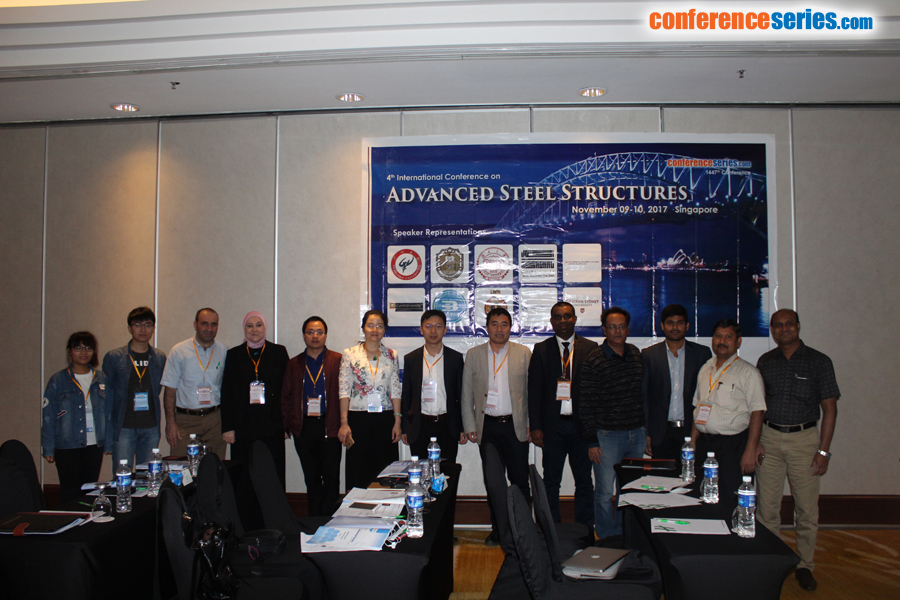
P K Gupta
Indian Institute of Technology Roorkee, India
Title: Behavior of concrete filled rectangular steel tubes subjected to flexural loading
Biography
Biography: P K Gupta
Abstract
A nonlinear fiber element analysis method has been presented for predicting the flexural strength of concrete filled steel tubes (CFST). The validation of the method has been done by comparing the results with the actual tested specimens. The fiber element analysis program was developed in Oracle software. Master form has master blocks and a table. Master blocks are used for the input data as well as for calculation work. Table in master form is used to show all required information about each fiber like centroidal distance from neutral axis, strain, stress, force and bending moment of each fiber. The master block section is divided into three parts namely: (1) Input data, (2) Calculation and (3) Results. The input section contains master blocks for material properties, dimensions of the specimen (like length, breadth and depth), steel tube thickness (all four sides) dimensions of concrete core section and the curvature for which results are obtained. To create the fibers, section of the beam is divided into parts as per requirement. Calculation section contains the calculation of centroidal distance of each fiber and other parameters which includes material stress-strain relationship to find neutral axis. Results section provides the printout for centroidal distance from neutral axis, strain, stress, force, bending moment in each fiber. Two rectangular steel hollow tubes having width 120 mm and wall thickness 1.58 mm and depths 140 and 150 mm were filled with concrete having compressive strength 60 MPa and 80 MPa. Both specimens having 1000 mm span were tested under pure bending with four point loading arrangement. A good ductility was observed in the tests. Accuracy of fiber element analysis program is verified by comparing its findings with the counterpart experimental results of both tested specimens and four specimens from literature. It is found that the fiber element analysis technique predicted results within acceptable degree of accuracy.




